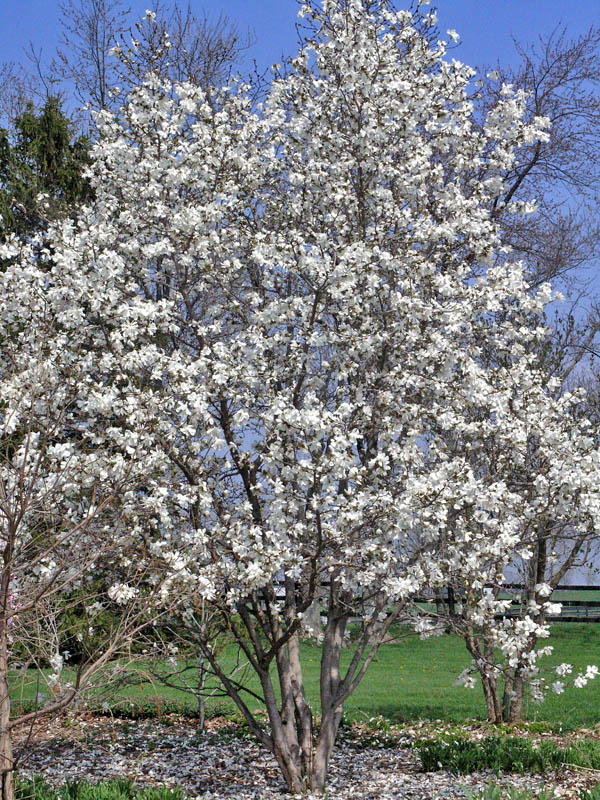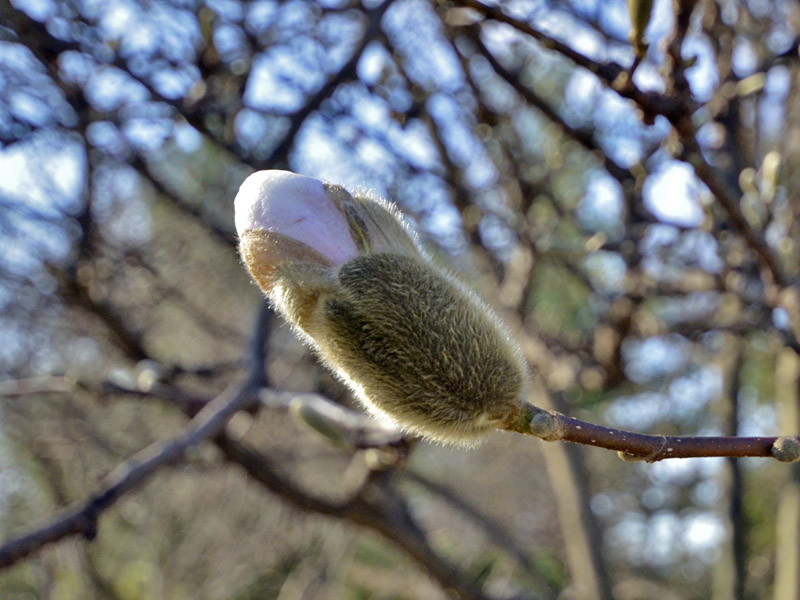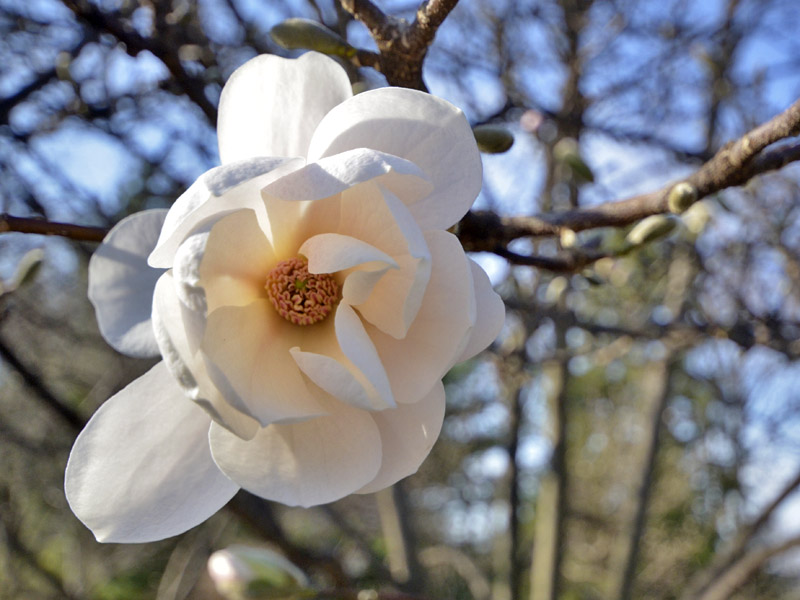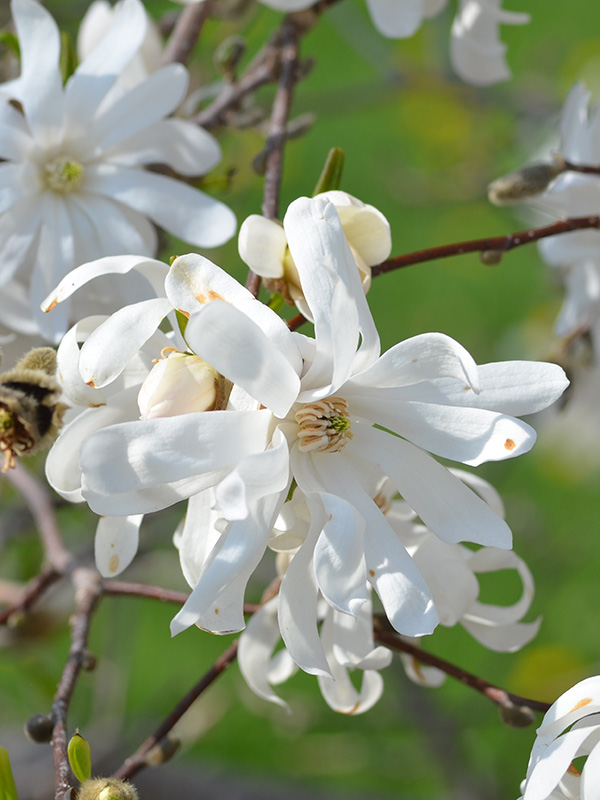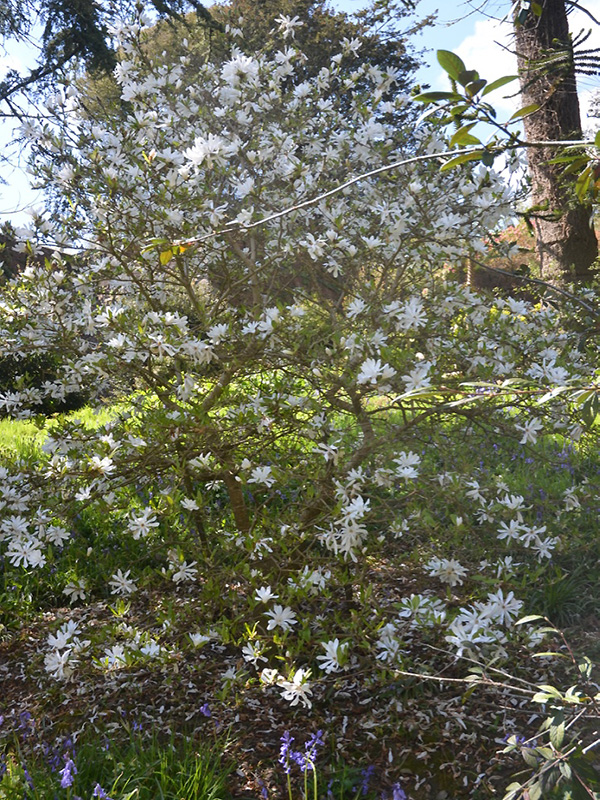
Woody > Magnolia > Magnolia stellata > Magnolia stellata
Magnolia stellata
Star Magnolia
Origin: The genus Magnolia is named after Pierre Magnol, a French botanist who lived from 1638 to 1715. Native to the southern mountains of Honshu, Japan, it was introduced to United States of America in the 1860’s.
Mike's
Opinion


"
This is a magnificent shrub/small tree that can be planted in any landscape. Small and bushy making it ideal for limited spaces, but can reach heights of 7 m if cared for properly. Such a beautiful display in spring of bursting white flowers will compliment and define any garden or landscape. There are different cultivars of stellata, making it easy to find one that suits your needs and wants.
Michael Pascoe, NDP., ODH., CLT., MSc. (Plant Conservation)
"
| Family |
| Magnoliaceae |
| Genus |
| Magnolia |
| Species |
| stellata |
| Category |
| Woody |
| Type |
| Shrub (deciduous) |
| Synonyms |
| Magnolia kobus var. stellata |
| Pronunciation |
| USDA Hardiness Zone |
| 4 - 8 |
| Canadian Hardiness Zone |
| 5- 8a |
| RHS Hardiness Zone |
| H7 - H4 |
| Temperature (°C) |
| -15 |
| Temperature (°F) |
| (-25) - 20 |
| Height |
| 4.5 - 6 m |
| Spread |
| 4.5 - 6 m |
Photographs
Description and Growing Information
Flowering Period
| General Description |
| Single or multi-stemmed densely branched plant with a broad crown. Slow growing, small in size. White flowers emerge before leaves in spring. Flowers have 5-20 white tepals and form a star shape. Fruit in early autumn are red/green and hold red seeds. With an estimated 5 locations and distribution area of 1,854 km, this species has been placed on the IUCN Red List as endangered. |
| Landscape |
| Great for small spaces and is easy to maintain. Beautiful accent plant or single specimen for maximum display purposes. Many different cultivars to choose from to suit your needs. |
| Cultivation |
| Magnolias require fertile well-drained soil. Flowers are damaged by frost and or wind so plant under shelter in full/partial sun. Prune out dead limbs and shape in late summer. Mulch annually. |
| Shape |
| Often multi-stemmed, oval or rounded crown. Compact, spreading or bushy shrub/tree. |
| Growth |
| Slow |
| ID Characteristic |
| Produces a pure white flower that forms before leaves in the spring. Smaller leaves and of a slighter stature when compared to the Common Saucer Magnolia. |
| Pests |
| Magnolia root borer (Euzophera magnolialis) may cause problems in nurseries, but rarely in the landscape. Magnolia scale can also be a common issue. |
| Habitat |
| Lowland hills, valleys and riverbeds at an altitude of 60-550 m. |
| Bark/Stem Description |
| Smooth, silver and grey on mature plants, chestnut brown on young branches. |
| Flower/Leaf Bud Description |
| Densely fuzzy 1-1.5 cm long flower buds and smaller vegetative buds are greyish green in colour and grow alternately along the branch. |
| Leaf Description |
| Alternate, sometimes whorled at the terminal, simple, broadly oval to oblong, 4.5-10 cm long and half the width, dark green above and light green beneath with fine hairs, 7-9 mm long petiole. |
| Flower Description |
| Faintly aromatic, pure white, 7.5-10 cm wide, 5 to 20 tepals, 3-4 cm long, slender and wavy. Flowers form before leaves which can get late frost damage if not grown in a protected area. Staggered blooming period in early spring. |
| Fruit Description |
| Reddish-green, knobby aggregate fruit , about 5 cm long. Often drops before fully developed. Fruit mature and open in autumn. Mature fruit opens at slits to reveal red-orange seeds. |
| Colour Description |
| Medium to dark green in the summer, turning to yellow / bronze in early autumn. |
| Texture Description |
| Fine, fern like texture. |
| Notable Specimens |
| Mac Cuddy Botanic Garden, Strathroy, Ontario, Canada. University of British Columbia Botanical Garden, Vancouver, British Columbia, Canada. |
| Propagation |
| Use fresh seed when germinating. Seeds need a period of cool stratification and proper handling. If propagating from cuttings, collect after flower buds have formed in mid-spring. Grafted plants increase at the fastest rate. |
